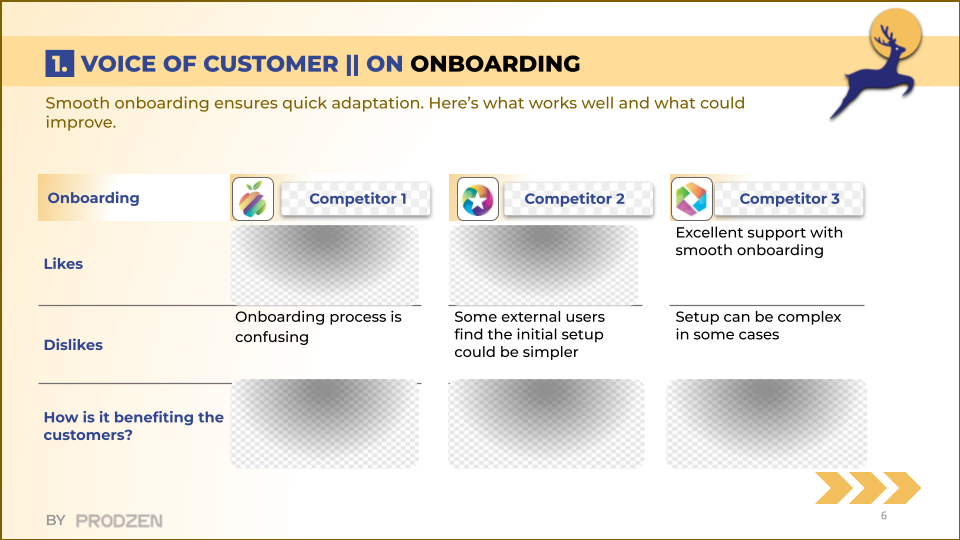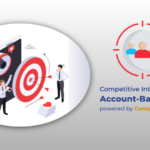
Using Competitor Reviews to Build High-Converting Marketing Copy
- Milind Soni
- February 5, 2025
- Blog
- #competewiser, #CompetitiveIntelligence, #customersentiment, #gotomarketstrategy, #MarketingStrategy, #productmarketing, #voiceofcustomer
- 0 Comments
When was the last time you checked your competitor’s reviews? If you’re not leveraging them, you’re leaving golden insights on the table.
Competitor reviews are a direct window into customer pain points, desires, and expectations. By analyzing them, you can craft marketing copy that speaks directly to your target audience, addresses their frustrations, and highlights what makes your product stand out.
In this blog, we’ll break down how to use competitor reviews to create high-converting marketing copy that resonates with your audience and drives more conversions.
Why Competitor Reviews Are a Goldmine for Marketers
When customers leave reviews, they’re giving raw, unfiltered feedback. They highlight what they love, what they hate, and what they wish was better. This is exactly what you need to craft messaging that strikes a chord.
Why competitor reviews are invaluable:
They reveal customer pain points
What’s frustrating users about your competitor’s product? Can you highlight how yours solves that problem better?
They show what customers love
What features or benefits get the most praise? How can you amplify those in your messaging?
They uncover gaps in the market
Are users asking for a feature that competitors don’t offer? That’s your unique selling proposition (USP) right there.
They provide real customer language
Using the exact words your audience uses makes your copy more relatable and engaging.
Step-by-Step Guide to Turning Competitor Reviews into High-Converting Copy
Step 1: Gather Competitor Reviews
Start by collecting reviews from sources like:
- G2, Capterra, and Gartner Peer Insights (for B2B SaaS)
- Amazon, Trustpilot, and Google Reviews (for consumer products)
- Social media comments and discussions (Reddit, Twitter, LinkedIn)
Look at both positive and negative reviews—they both provide valuable insights.
Step 2: Identify Common Themes
Go through the reviews and categorize them into key themes:
- Pain points – What are users frustrated with?
- Desired features – What are customers repeatedly asking for?
- Standout benefits – What makes users happy?
- Emotional triggers – What words and phrases are being used to express satisfaction or disappointment?
Example: If multiple reviews mention, “The software is great, but the onboarding process is confusing,” that’s a pain point you can address in your marketing copy.
Step 3: Craft Messaging That Speaks to Customer Pain Points
Once you’ve identified pain points, position your product as the solution.
Example:
❌ Competitor Review: “The dashboard is cluttered and hard to navigate.”
✅ Your Marketing Copy: “Tired of cluttered dashboards? Our intuitive interface makes navigating your data effortless.”
Example:
❌ Competitor Review: “The customer support team takes too long to respond.”
✅ Your Marketing Copy: “Get instant support whenever you need it—no more waiting for hours.”
This approach makes your copy highly relevant and conversion-focused because it directly addresses real customer concerns.
Step 4: Use Customer-Validated Language
Your audience already tells you how they describe their problems—so use their words!
Instead of writing:
🚫 “Our AI-powered tool automates your workflow with ease.”
Try:
✅ “Save hours of manual work—our AI does the heavy lifting for you.” (Borrowed directly from customer reviews)
By mirroring customer language, your marketing copy feels more natural and relatable, leading to higher engagement and conversions.
Step 5: Highlight What Customers Love About Competitors—And Do It Better
Identify what customers already like and position your product as the best alternative.
Example:
If competitor reviews consistently say, “Great analytics, but too expensive,”
your copy could say:
💡 “Get powerful analytics without breaking the bank—affordable pricing for growing businesses.”
This way, you highlight a strength while overcoming the main objection.
Step 6: Use Negative Reviews to Differentiate Your Brand
Your competitor’s biggest weaknesses can be your strongest selling points.
Example:
❌ Competitor Review: “The mobile app is slow and crashes often.”
✅ Your Copy: “A lightning-fast mobile experience—stay productive on the go, without crashes.”
By addressing common frustrations head-on, you position yourself as the better choice.
Real-World Example: Using Competitor Reviews to Improve Messaging
Let’s say you’re marketing a partner relationship management tool.
🔎 Competitor Review Insight:
- “Great features, but the learning curve is too steep.”
- “No integrations with Slack or Zoom.”
💡 Your High-Converting Copy:
- “Get started in minutes—our intuitive platform is built for teams of all sizes.”
- “Seamlessly integrate with Slack, Zoom, and all your favorite tools.”
By directly addressing what competitors are lacking, your product appears more appealing and easier to adopt.
Final Thoughts: Reviews = The Ultimate Conversion Hack
Your competitor’s reviews are an untapped goldmine of insights. By mining them for customer frustrations, desires, and language, you can craft high-converting marketing copy that speaks directly to your audience.
Here’s your action plan:
- Collect reviews from G2, Capterra, Amazon, etc.
- Identify key themes: pain points, benefits, and objections.
- Craft copy that mirrors customer language and positions your product as the best alternative.
- Highlight competitor weaknesses and turn them into your strengths.
By following this process, you’ll create marketing copy that connects, converts, and sells—without guesswork.
Ready to transform competitor insights into killer marketing copy? Get your CompeteWiser Voice of Customer Report today!




